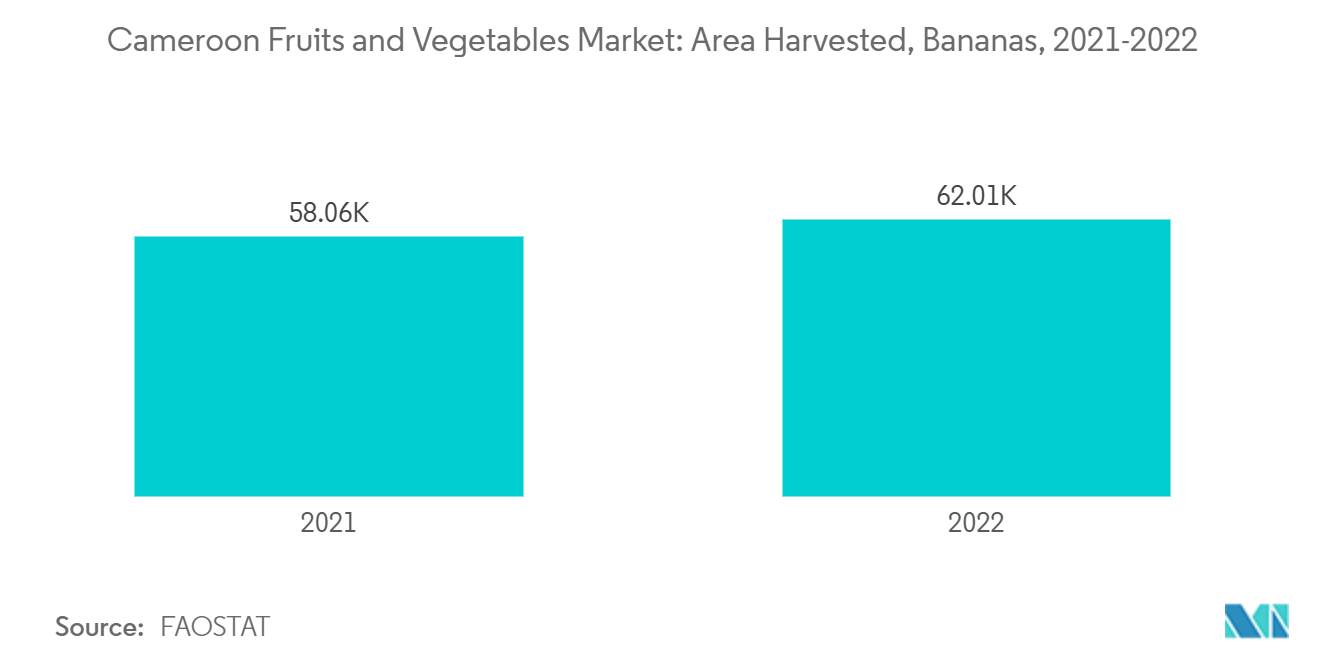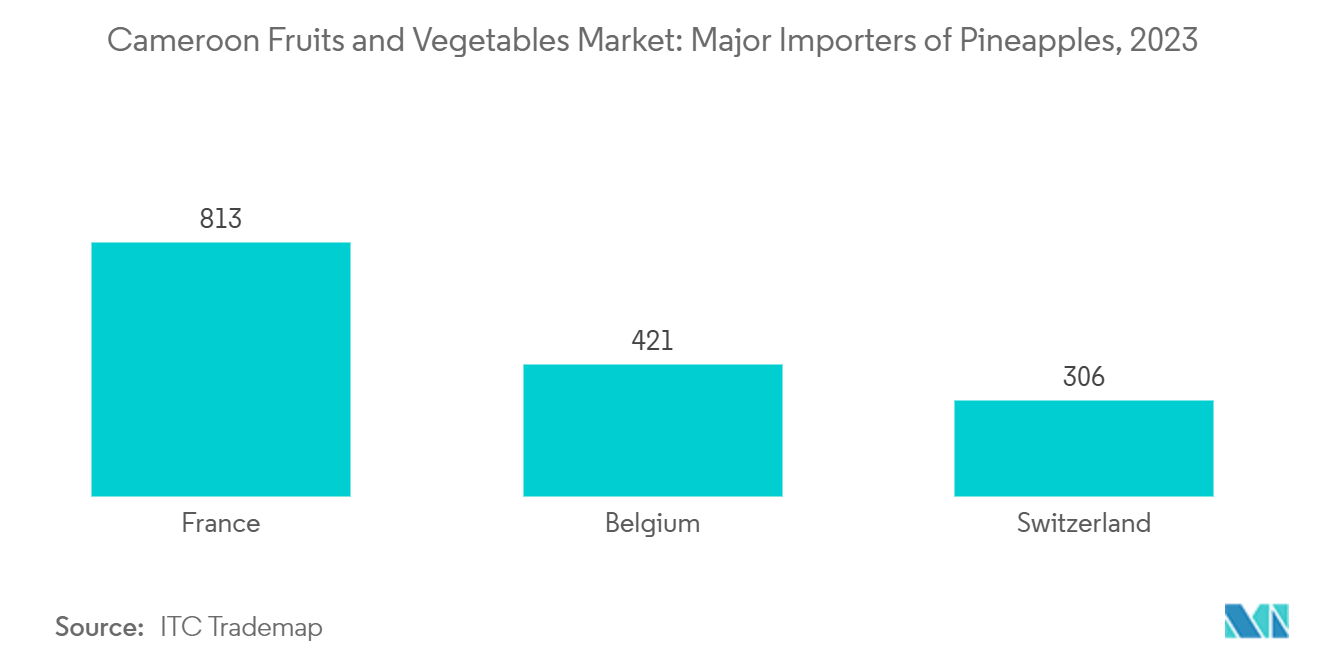Market Trends of Cameroon Fruits And Vegetables Industry
Plantains and Bananas Dominated the Fruit Segment
Cameroon is a major producer of bananas and plantains in Africa, significantly contributing to the Central African region's agricultural economy. These crops are essential staples in the Cameroonian diet and important export commodities. Smallholder farmers and large-scale plantations cultivate both dessert bananas and plantains extensively. Cameroon ranks among the top banana producers in Africa, benefiting from its favorable tropical climate. The South-West and Littoral regions, with their humid conditions, are the primary banana-producing areas. Rising consumer demand has prompted producers to expand cultivation areas. According to Food and Agriculture Organization statistics, banana harvesting area increased from 59,622 hectares in 2020 to 62,012 hectares in 2022. Consequently, Cameroon's banana sector is promoting production commercialization to encourage substantial investments in commercial banana plantations, aiming to increase productivity.
Plantain production in Cameroon primarily serves domestic consumption. As a critical food security crop, plantains are particularly important in rural areas. Cultivation occurs across the country, with the Centre, East, and South regions being key growing areas. However, the sector faces challenges such as soil degradation, limited access to quality inputs, and diseases like Black Sigatoka and Panama disease. Plantains are predominantly consumed domestically, with minimal international trade. They are a staple food for many households, prepared through various methods including boiling, frying, and roasting. A 2023 article in the American Journal of Food Science and Technology estimates plantain consumption in Cameroon at an average of 150 kilograms per capita annually, highlighting its significance in the local diet. Urban demand for plantains is increasing due to population growth and rising incomes. However, high post-harvest losses, ranging from 30% to 40% of total production, restrict plantain availability in local markets and drive up prices due to supply shortages.

Export Opportunities from European Countries
Cameroon is a significant exporter of agricultural products, including fruits and vegetables, with the sector playing a vital role in the country's economy. The primary fruits exported by Cameroon include bananas, pineapples, and mangoes. Bananas are a major export product, primarily destined for the European Union. According to the ITC Trade Map, key European markets include France, Belgium, and the Netherlands. Belgium was the largest importer of bananas from Cameroon, accounting for 130.1 thousand metric tons in 2023. After bananas, the most exported fruits are plantains, dates, figs, and pineapples. France, Belgium, and Italy are the main importers of Cameroonian pineapples. In 2023, France imported pineapples worth USD 813 thousand, as reported by the ITC Trade Map. The Cameroonian government has allocated resources to diversify and strengthen agricultural exports under the National Agricultural Investment Plan (PNIA, 2019-2024), with a focus on horticulture. Pineapple is a key crop under this plan, and several projects have been initiated to boost production and post-harvest handling.
Cameroon's main vegetable exports include onions, potatoes, and tomatoes. The onion export industry has grown in recent years, with the country exporting to Central African markets, particularly Gabon, Chad, and the Republic of Congo. Potatoes are also a key export, with shipments primarily going to neighboring countries in the Central African Economic and Monetary Community (CEMAC) region, according to the ITC Trade Map. The Republic of Congo was the largest importer of vegetables from Cameroon, accounting for USD 858 thousand in 2022. Tomatoes, though exported in smaller quantities, are sold to markets in Gabon and Equatorial Guinea. These neighboring countries rely on Cameroon's vegetable exports due to their own limited agricultural output.


